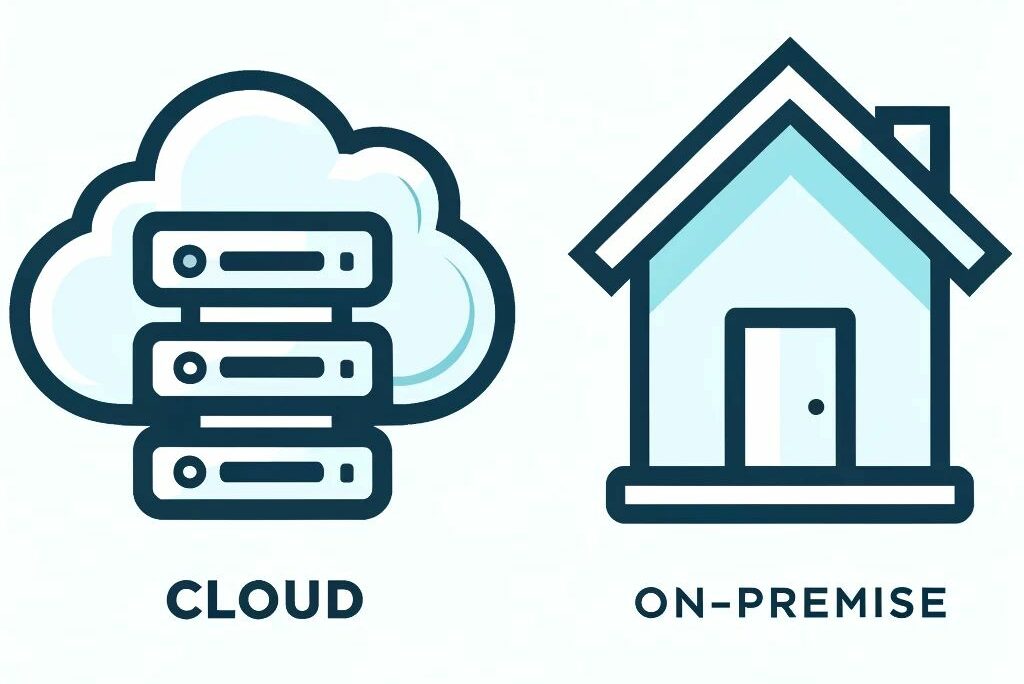Comparing EDI Solutions: On-Premise vs. Cloud-Based EDI Services
Using an on-premise EDI solution might seem like a logical choice. You have full control over the software and server, and at first glance the idea of a single up-front cost might seem more attractive than a subscription model for a cloud-based option.
But is an on-premise EDI really the right choice for your business? There’s more to the decision than that first glance would indicate.

What Is On-Prem EDI?
On-premise (or on-prem) software is installed on a physical server within your company’s walls. With an on-prem solution, your organization has to manage security, maintenance and updates of your software itself. This means you have complete control over all aspects of your EDI software – but also that you’re responsible for solving any issues that may arise from it.
If you’re a smaller organization with relatively few orders and inventory to maintain, an on-prem solution might work for you – at least for a while. You won’t need the larger, more costly servers that a big enterprise requires to handle its order volume.
What’s Cloud EDI?
Cloud-based EDI is installed on cloud servers and is offered by providers on a Software-as-a-Service (SaaS) model. Instead of maintaining a physical server on your own property, your cloud EDI provider maintains the server and handles all of the maintenance, security and updates for you.
Pros and Cons of On-Prem EDI
The main reason an organization might want an on-prem EDI is to keep full end-to-end control of their entire operation. Data, security, infrastructure, added as-needed capabilities – all of these are entirely in your hands.
Another reason some organizations are attracted to an on-prem solution is the perception that it will cost less than a third-party cloud option. Providers charge a monthly fee, often based on the amount of data you process through their server.
But that perception that an on-prem solution is pay once, use forever isn’t quite accurate. While it’s true you won’t have a monthly subscription fee, you still have to hire an IT team with the expertise needed to maintain the software, troubleshoot problems, and stay on top of security updates.
Another issue that many organizations overlook is onboarding and effectively communicating with external partners. When you’re maintaining your EDI in-house, integrating your software with whatever your new partner uses can be tricky and often requires IT resources to come up with solutions on a case-by-case basis.
On-prem EDI also lacks automation, requiring manual data entry that can introduce human error into critical business transactions.
That’s why on-prem EDI is really most viable for small organizations with few orders and trading partners. As soon as your organization starts to grow and become more complex, your in-house software may turn into a major growing pain.
Why Choose Cloud-Based EDI?
Let’s address the elephant in the room first: costs. Yes, you’ll have ongoing monthly fees when you go with a SaaS EDI. But when compared to the expense of maintaining your own servers, keeping an experienced IT team on staff, and dealing with inefficient partner onboarding and data sharing across your supply chain network, a third-party cloud EDI can actually save you money over time.
You’ll also be tapping into the experience and expertise of a provider who has handled many EDI implementations. If there’s a hiccup during rollout or after installation, they know how to fix it quickly and with minimal loss to your organization’s productivity. They also work with many organizations with many trading partners, so cloud EDI has many built-in integrations that help you onboard new vendors or customers much faster and with fewer issues.
This makes scaling your solution simple and easy – you can get more or less server space as needed without major infrastructure overhauls. Even better, modern cloud-based EDI software offers automation and instant data syncing across all of your organization’s systems. Your team gets real-time access to data to help make more strategic business decisions, much faster than with an on-prem EDI that requires a lot more manual work.
On-Prem vs. Cloud EDI: It Doesn’t Have to Be Either-Or
Want the best of both EDI worlds? A hybrid solution might be the best choice for your organization. Combining an in-house and cloud EDI model gives you the control you’re looking for while leaning on the third-party system for critical capabilities and integrations. Learn more about EDI, bust some myths and how BetterEDI can help your business process data more efficiently.
